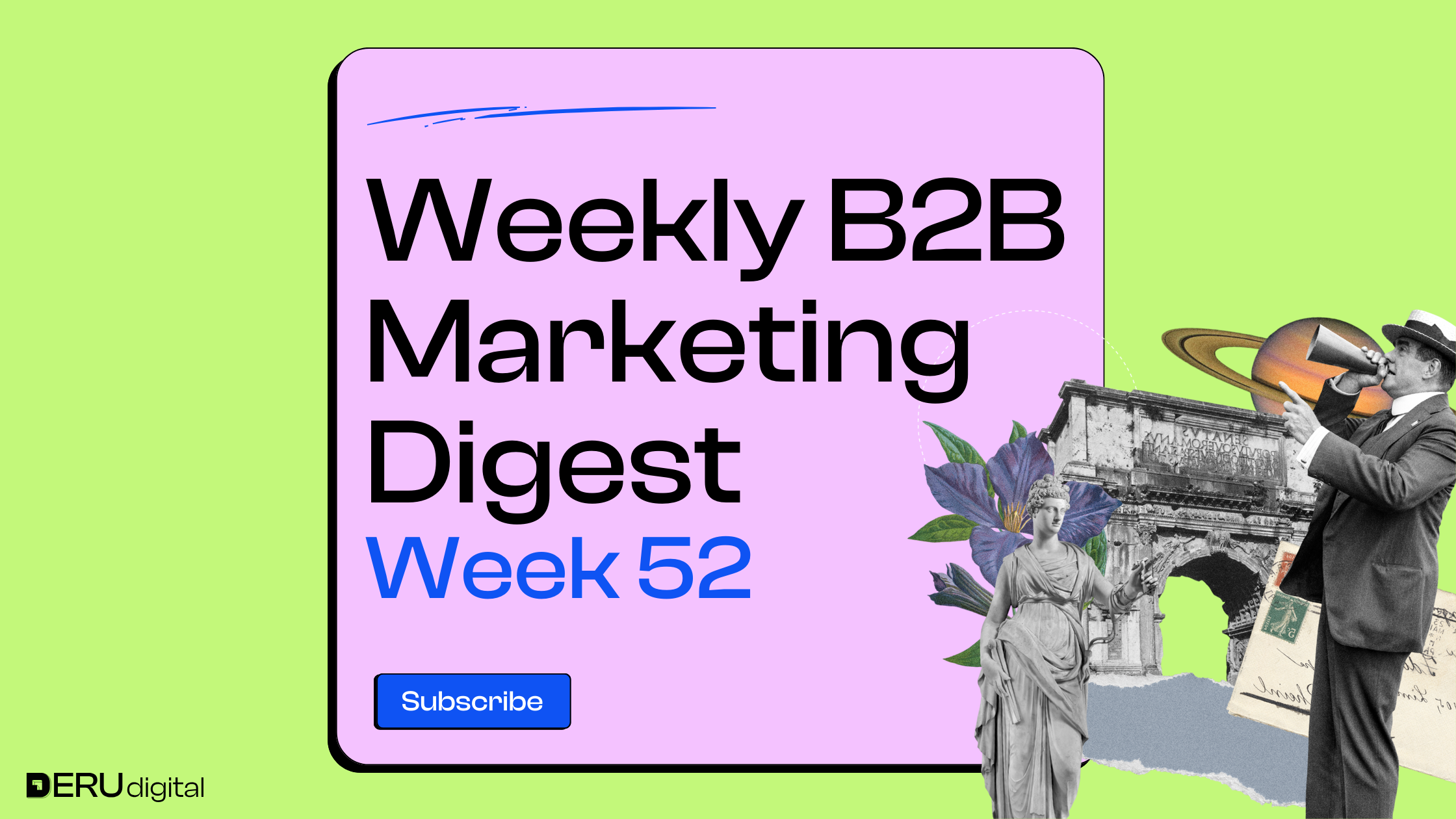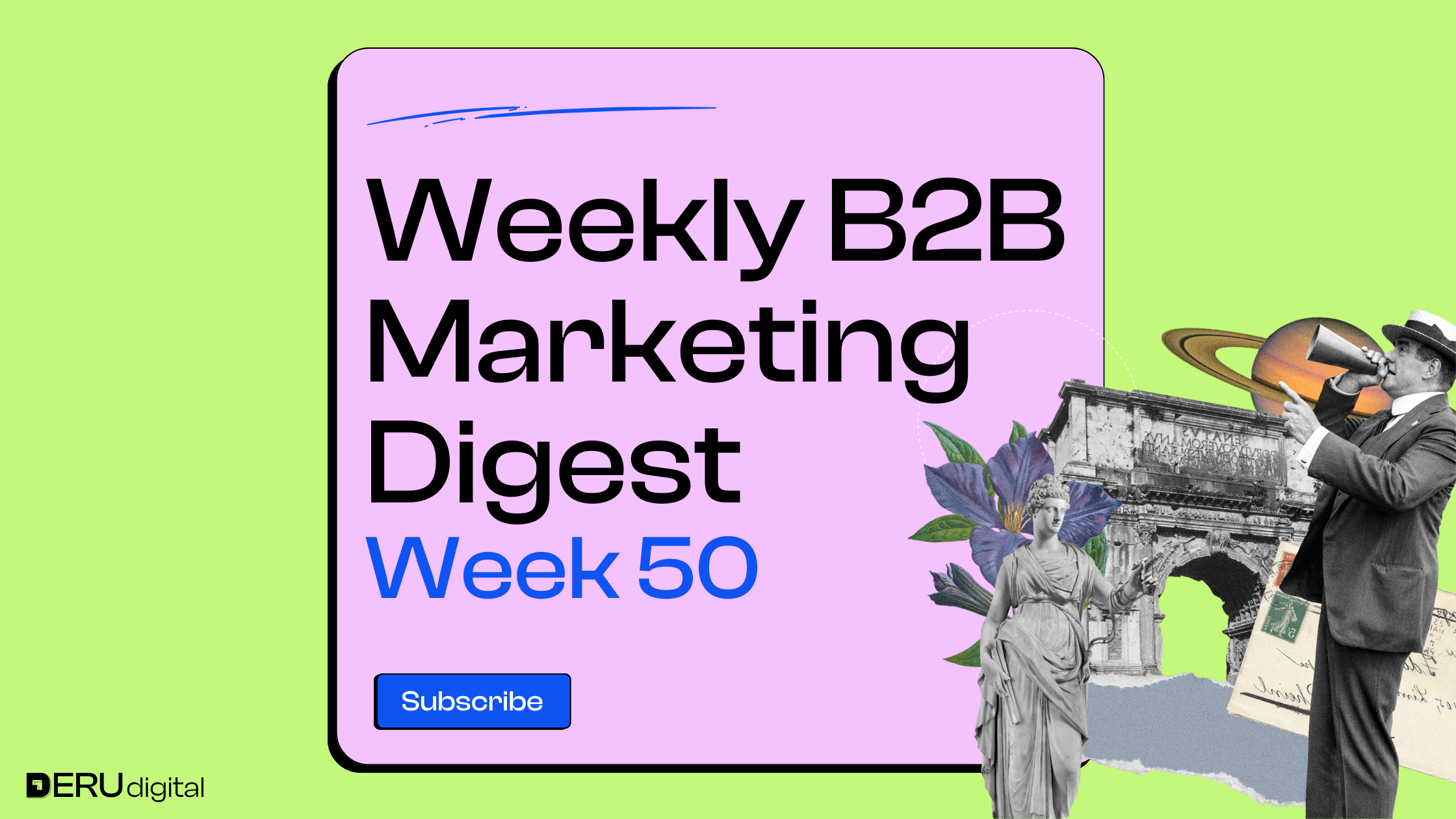INSIGHTS FROM EXPERTS ON LINKEDIN
Johnathan Dane explains that B2B marketing often flops not because it’s bad, but because it’s out of order. At KlientBoost, they follow the “Marketing Maturity Mountain,” a 5-stage framework that helps teams focus on the right things at the right time, from product-market fit to brand building. Instead of trying everything at once, this approach brings clarity to what actually moves the needle at each stage of growth.

Blake Strozyk wants B2B marketers to stop chasing huge audience sizes on LinkedIn just because the platform nudges them to. If your business only sells to 1,000 accounts, stick to those 1,000; don’t dilute your targeting for scale that doesn’t match your market. The best ad performance often comes from knowing your audience better than LinkedIn ever could.
Tas Bober shares a revamped landing page template built to match Google’s new requirements and help buyers actually get what they need. Most B2B pages either lack details or go overboard with every feature and integration ever built. Instead, focus on what buyers care about most: what the product does, who it’s for, and why it’s worth their time.

Tomas Maltha Krogh shares that Instagram posts are now indexed by Google and Bing, meaning your captions can show up in search results. This shift turns social content into searchable assets, making your social media manager part of your SEO strategy. If your Instagram is public, professional, and 18+, it’s time to start treating every caption like it matters beyond likes.
Celia Hey reveals 10+ proven AI prompts used by her team to generate scroll-stopping SaaS ad creatives. These prompts kickstart the design process, speed up ideation, and include real-life examples from brands like Instantly and Bonsai. If you want a peek into the process and the finished results, she’s sharing the full file on request.
Stefan Lasek reflects on a podcast that breaks down why ads work, and it’s not just logic. The real magic comes from building memory structures (so people think of your brand) and sparking emotion (so they remember it). Dull ads may not fail, but they don’t do much either. Memorable, emotional campaigns are where the ROI lives.
Steffen Hedebrandt announces Dreamdata’s new Webhooks integration, letting B2B teams send audience intent data directly to tools like Clay or Zapier. This unlocks more personalized outreach and automated workflows, helping teams act faster and smarter with their GTM strategy. It’s a big move toward more connected, data-driven marketing.
WHAT'S NEW IN THE INDUSTRY
A new study from The Ehrenberg-Bass Institute shows that relying solely on Product-Led Growth (PLG) won’t get B2B tech brands as far as many think. Sustainable growth actually comes from broad customer acquisition, not just retention, free trials, or upsells. The takeaway: even in a product-driven world, brand and marketing still play a central role in scaling.

Google is officially upgrading all Video Action Campaigns to Demand Gen, giving advertisers access to more engaging, multi-format ads across YouTube, Discover, and Gmail. Demand Gen is built for today’s visual browsing habits and promises better performance, up to 20% more conversions at the same CPA. If you haven’t adapted your creatives yet, now’s the time to embrace a discovery-first approach.

Google’s Keyword Planner now lets advertisers break down forecasts by city, region, and device type, making campaign planning a lot more precise. This means better budget allocation and smarter targeting for specific geographic markets or devices. Though not widely announced yet, this update could seriously level up local ad strategies.

Google Ads Editor 2.10 is here with a major upgrade: smarter AI features, tighter targeting controls, and easier creative workflows—all without leaving your desktop. You can now exclude platforms, fine-tune targeting by OS, use vertical video formats, and preview landing pages directly. It’s a big win for advertisers managing large-scale accounts who want more control and speed.
A $20M+ ad spend analysis found that Google’s hidden search terms, queries advertisers can’t see or optimize, could be eating up to 85% of their ad dollars. These low-visibility terms come with higher costs, lower CTRs, and poor ROI, raising questions about whether this is really about privacy or just monetizing low-quality traffic. Google insists the limits are privacy-driven, but marketers are pushing back hard.


That’s the scoop for this week! If you found this valuable and any useful insights caught your eye, feel free to share them with your network.
Until next week!



